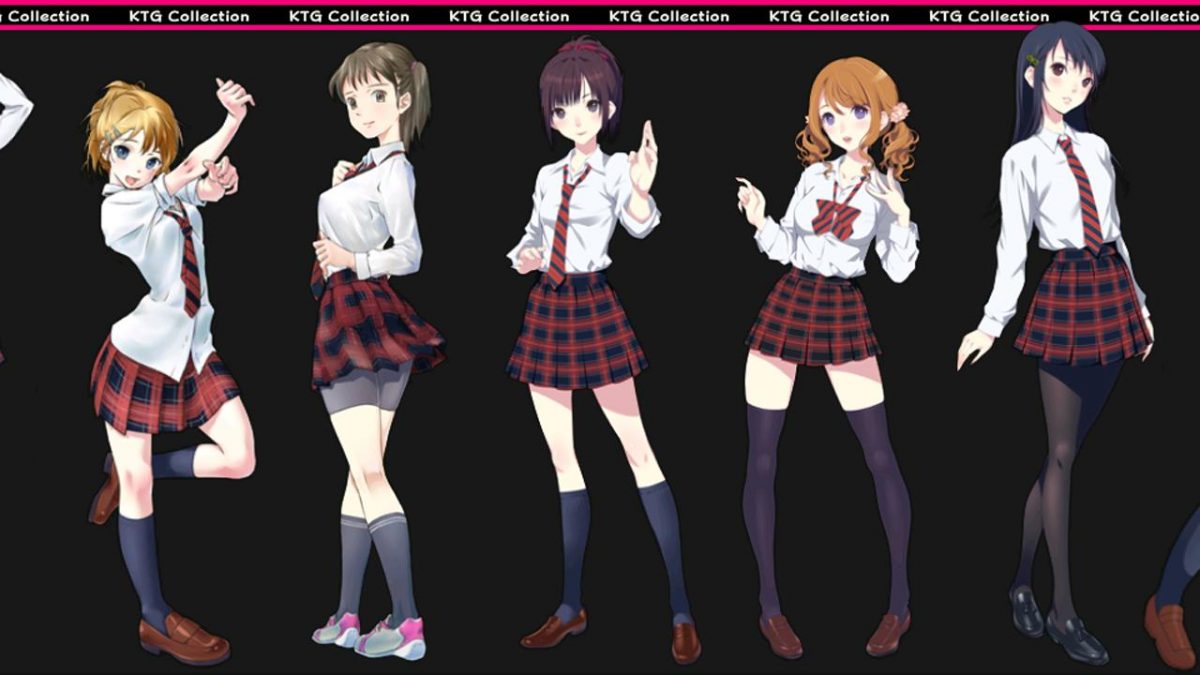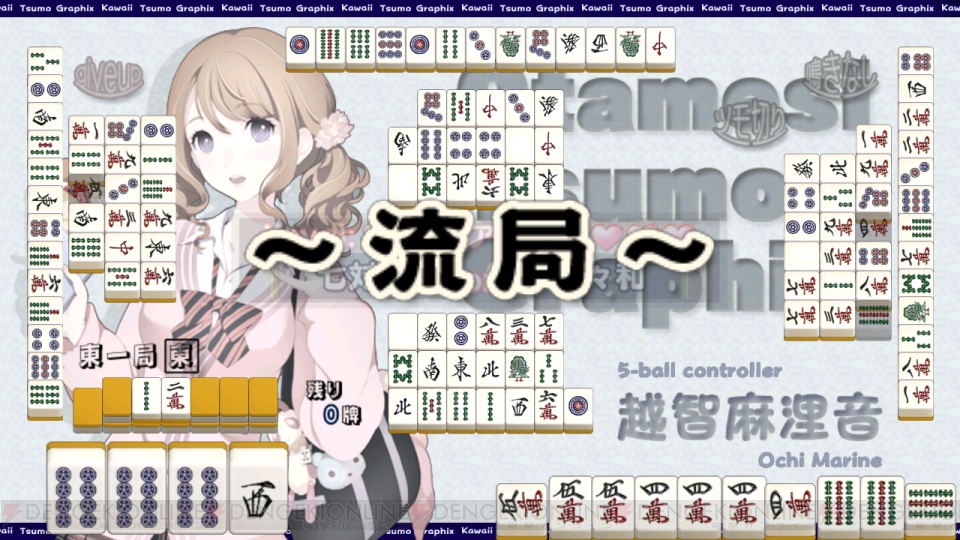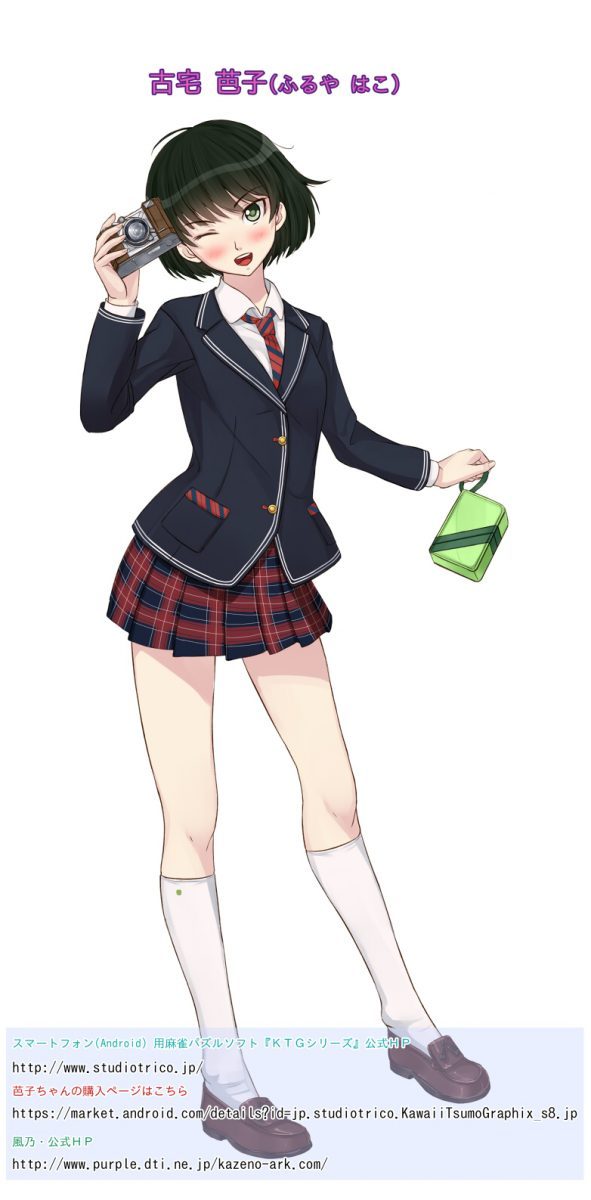The recently mentioned Super Real Mahjong was a holdover from Japanese arcades’ seedier days that proved to have an enduring appeal. It also inspired competitors and copycats over the years, especially as h-game developers shifted their focus towards PCs, browsers, and mobile apps. KTG, or Kawaii Tsumo Graphix, is one such case: a peculiar successor to classic strip mahjong titles that vanished before it could ever take off. Even now, the circumstances around it remain a mystery.

Emerging not long after the closure of Super Real Mahjong‘s original developers, the series was developed by studiotrico, a team with no apparent track record. While there was a short-lived studio by that name founded in 2005 by ex-ATLUS staff who had some involvement with their former associates, it’s unclear whether there’s any connection. Either way, KTG burst into android storefronts around late 2011, eventually spawning at least 49 distinct apps by the time its website was last archived in 2014, shortly after the games were pulled from circulation. You might have even stumbled upon one of its puzzle-based spinoffs while browsing through the Google Play Store, once upon a time.

Almost as quickly as it appeared, however, it went dark. Permanently. So what exactly was this series? And why did it slide off the face of the earth?
A Spotted Inheritance
Even if you’re not familiar with mahjong, it’s not hard to get the gist of the main gameplay loop. Make sure you keep scoring, while reducing your opponent’s score to zero, by which point she’ll remove a piece of clothing. In that respect, it’s not all that different from Super Real Mahjong or strip poker games. There are, however, some key distinctions that make the mobile games peculiar.
A rare clip showing the mobile game in action, highlighting both its distinctive aspects and shortcomings. Circa 2012. (Source: YouTube)
For one, there are no voiceovers or animated cutscenes of any sort, as far as could be gleaned. The closest you’d get to these would be some crisp transitions between the girls’ various states of (un)dress. Nonetheless, the atmosphere and character seen in the old arcade h-games is sorely lacking. Moreover, while there’s a free KTG Collection app that allowed you to access the other 48 main entries in one place, said apps only featured a single heroine at a time. While the price tag was reportedly cheap, at less than 300 yen individually, it translated into paying more to get any real bang for your buck.

While this can make the series seem like a lazy ripoff, it made up for that with the visuals. The developers evidently commissioned or contracted some talented artists. This could be seen in how the designs for the various ladies are both eye-catching and distinct. Despite having little more than a name and basic description, you could tell from their poses, attire, and facial expressions that at the very least, they had the potential for decent personalities.
The gameplay featured some mahjong twists to freshen things up and each heroine had several “stages” in their respective in-app galleries (albeit with a mild degree of censorship). The official website offered special free patches that offered you more than enough to keep enjoying the game.

While there is some circumstantial evidence on how successful KTG actually was, studiotrico claimed that it had garnered “over 150,000 downloads” by the time the apps vanished from Google Play. Regardless, the series was popular enough to have been given a spotlight on Dengeki Online in 2013 and positive recommendations on Japanese social media. From what could be gathered from the official website, meanwhile, there were plans to port all the games into English and further develop the cast for a project called Fairy Tile Stories. Given enough time, it could have approached the quality of Super Real Mahjong, while forging its own identity.
That wasn’t to be.
Backroom Mystery, or Censorship?
Sometime in 2014, the Google Play Store suddenly pulled every KTG title and its offshoots from their platform. Apart from a passing, if apologetic mention on studiotrico’s homepage and promises of keeping the files available, no further news or updates were ever released. Before long, the developers’ social media accounts became inactive, and so did the website itself. With communications and direct access to the games gone, the series was dead in the water, soon sliding into obscurity as other titles took its place.

The closest thing to an explanation given comes from Japanese artist ohko_tencho in a 2018 Twitter thread:
KTG麻雀シリーズのマリネちゃん。KTGとはカワイイ・ツモ・グラフィックスの略(白目)。Google Playの審査が甘かった時期に登場した脱衣麻雀で、KTG Collectionというビューワーだと、ちょっとだけ過激になる。精力的にシリーズ展開していたが、エロアプリ規制の波を受けて、配信停止、公式サイトも消滅 pic.twitter.com/XsCuEccJMw
— おーこ@雑談垢 (@ohko_tencho) May 8, 2018
…The series was actively developed, but due to the wave of restrictions on erotic apps, the distribution was suspended and the official website disappeared.
This may partially explain why the apps were sold at all through Google Play, as the lax enforcement of the early 2010s would have allowed them to get away with as little censorship as possible. This alone doesn’t really explain why it disappeared so quickly. On top of persistent demand for games like it, the series stood outside both the regulations encouraged by the Japan Amusement Machine and Marketing Association and the coverage of Bill 156 by virtue of being only distributed online. There’s also the fact that there was, and remains, no lack of alternative platforms with which the developers could have continued their apparent plans.
While mobile game companies disappearing is far from unheard of, the circumstances around this case open room for speculation. The studio might not have been able to sustain itself due to financial troubles, perhaps the team ran off after reaping the profits, or maybe some other backroom drama was involved. The full truth remains unknown, and in all likelihood may stay that way.

From what could be gleaned from surviving material, it’s a pity KTG never became a real contender to its now-classic inspiration. It would have been a curious glimpse into how the world of arcade h-games managed to survive their own downfall, not unlike Super Real Mahjong. Alas, you’d be forgiven for thinking that it might not have existed, when trying to search for further information in Japanese would likely bring up false leads or dead links. Chances are, any remaining copies of those apps are either lurking in someone’s phone or lost in the online ether.

That being said, there are screenshots out in the wild, if you know where to look, including some of the material done for the series by the artists who worked on those apps. Not only are some of those creators still active today, but their handiwork has held up remarkably well. Which only makes the loss that much more bitter.














